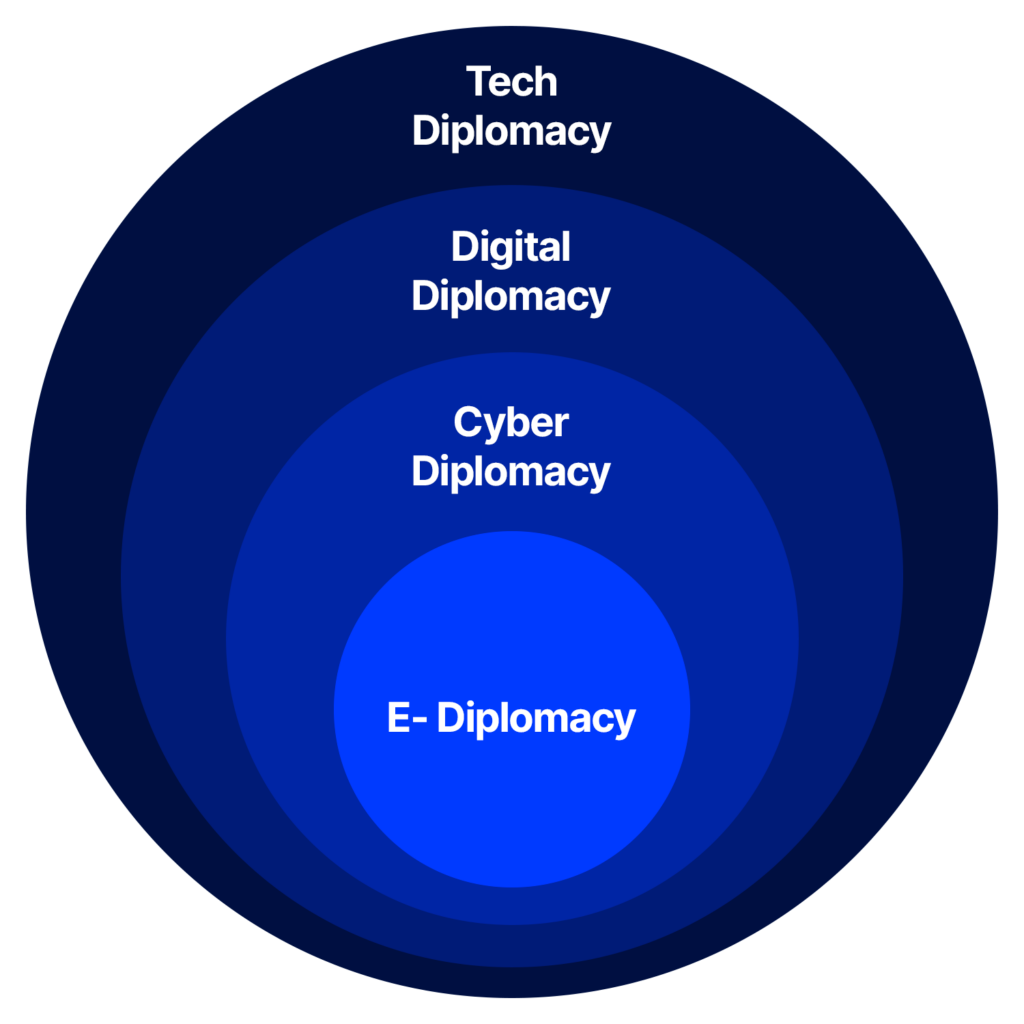Welcome to the realm of tech diplomacy, a dynamic field that’s rapidly reshaping how nations, corporations, and civil society interact on the global stage. As explored by Eugenio V. Garcia in his recent work, tech diplomacy is more than just a buzzword; it’s a critical framework for understanding and navigating the complex interplay between technology and international relations in our digital age.
Understanding Tech Diplomacy
Tech diplomacy encompasses a broad spectrum of activities and concepts, each playing a crucial role in today’s interconnected world:
- E-Diplomacy: This refers to the use of digital tools and platforms in diplomatic work. From social media engagement to virtual meetings, e-diplomacy is transforming how diplomatic services operate and communicate.
- Cyber Diplomacy: Focused primarily on issues of cybersecurity and cyberwarfare, this aspect of tech diplomacy deals with the critical task of maintaining stability and security in cyberspace.
- Digital Diplomacy: A broader concept that includes both the tools of e-diplomacy and the substantive issues related to the internet and digital technologies. This covers topics such as human rights online, privacy, disinformation, and content moderation.
- Tech Diplomacy: The most comprehensive term, tech diplomacy extends beyond digital issues to include emerging technologies like artificial intelligence, quantum computing, biotechnology, and more.

Diagram by Eugenio V. Garcia
The Multistakeholder Nature of Tech Diplomacy
One of the most significant aspects of tech diplomacy is its multistakeholder approach. Unlike traditional diplomacy, which primarily involves state actors, tech diplomacy engages a diverse range of participants:
- Governments: Still central players, but no longer the sole decision-makers.
- Tech Companies: From Silicon Valley giants to innovative startups, these entities now wield significant influence in global affairs.
- Civil Society Organizations: Advocacy groups, think tanks, and NGOs play crucial roles in shaping debates and policies.
- Academic Institutions: Researchers and scholars contribute expertise and foresight on technological developments and their societal impacts.
This multistakeholder model reflects the complex nature of technological issues, which often transcend national boundaries and require collaborative solutions.
Garcia’s proposed definition of Tech Diplomacy is particularly noteworthy:
“Technology Diplomacy is the conduct and practice of international relations, dialogue, and negotiations on global digital policy and emerging technological issues among states, the private sector, civil society, and other groups.”
Key Issues in Tech Diplomacy
Tech diplomats grapple with a wide array of challenging issues:
- Data Governance: Negotiating cross-border data flows while respecting privacy and security concerns.
- Digital Human Rights: Ensuring freedoms of expression and association in online spaces.
- Artificial Intelligence Governance: Developing ethical frameworks and international standards for AI development and deployment.
- Cybersecurity: Combating cyber threats and fostering international cooperation on digital security.
- Digital Economy: Addressing challenges and opportunities in e-commerce, digital currencies, and the future of work.
The Future of Diplomacy in a Tech-Driven World
As technology continues to advance, the nature of diplomacy itself is evolving. We’re likely to see:
1. Hybrid Diplomacy: A blend of traditional face-to-face meetings and virtual interactions, optimizing both personal connections and efficiency.
2. Tech-Savvy Diplomats: The diplomats of tomorrow will need to be as comfortable discussing AI algorithms as they are with trade agreements.
3. Rapid Response Mechanisms: As technological changes accelerate, diplomatic channels will need to adapt to respond swiftly to new challenges and opportunities.
4. Global Tech Governance: Efforts to establish international norms, standards, and possibly treaties governing emerging technologies.
Conclusion
Tech diplomacy represents a vital evolution in international relations, reflecting the central role that technology now plays in our global society. As we navigate this new landscape, it’s crucial that we develop frameworks and practices that harness the potential of technology while addressing its risks and challenges.
By fostering dialogue and cooperation among diverse stakeholders, tech diplomacy offers a path forward in our increasingly digital world. It reminds us that even as our tools change, the fundamental goals of diplomacy remain: to promote understanding, cooperation, and peaceful resolution of conflicts in our global community.
For those interested in delving deeper into this topic, Eugenio V. Garcia’s article “What is Tech Diplomacy? A Very Short Definition” offers additional insights and can be accessed (https://medium.com/@egarcia.virtual/what-is-tech-diplomacy-a-very-short-definition-9042afdc9ce4).

